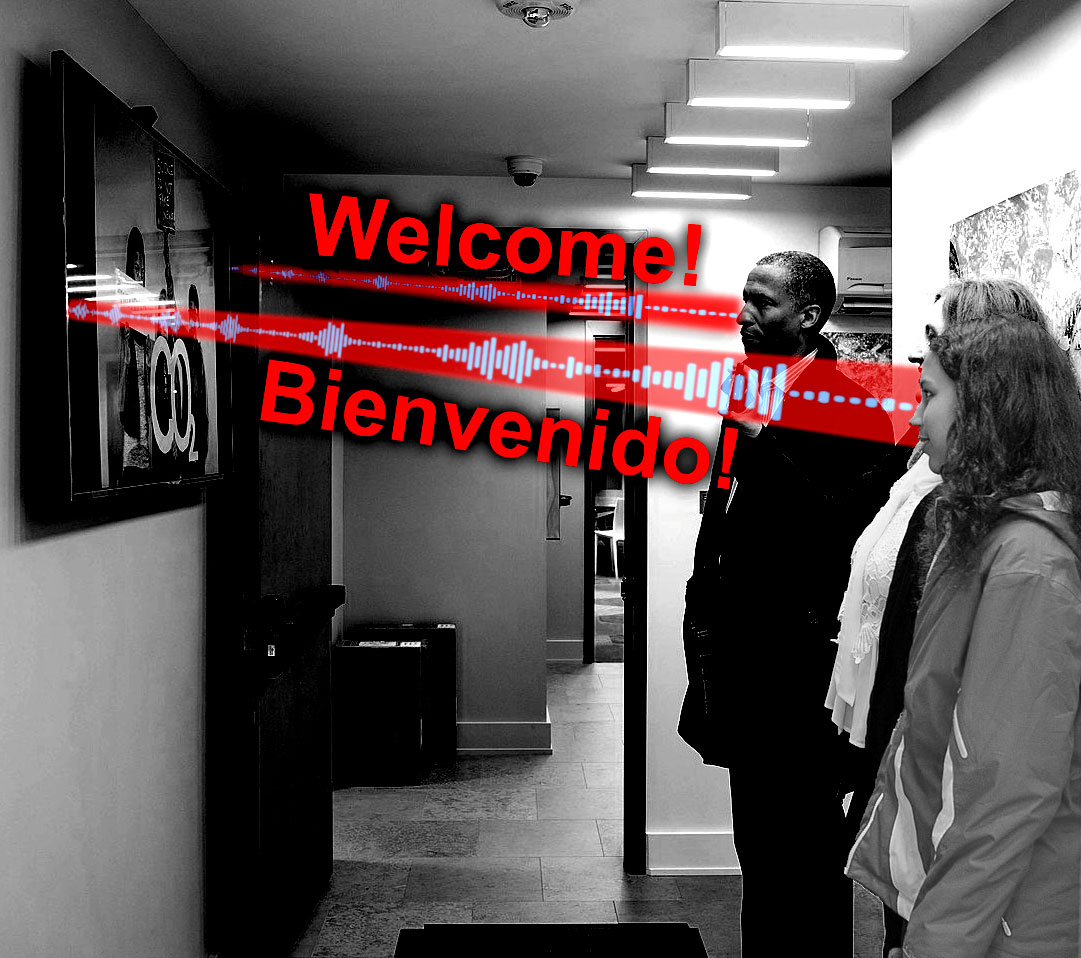Targeted Acoustic Laser Communication (TALC)
Using a laser tuned to interact with water vapor in the air, TALC transmits audio messages to specific individuals using only their ears as a receiver. Because the technology provides safe, remote signal transmission to one recipient and no one else, it provides a level of secure communication in crowded or noisy environments. TALC could be used in theater or lecture hall environments, offering localized, targeted audio and/or translation capability, for example.
Concept

TALC relies on a phenomenon called the photoacoustic effect, in which pulses of light are converted into sound when absorbed by a material ─ in TALC’s case, water vapor in the air surrounding a message’s recipient. TALC uses a very specific wavelength of light (1.907 μm) because it is strongly absorbed by ambient water vapor and is easily produced via thulium fiber laser. Our technique provides directionality and localization of the sound by using a rotating mirror, or acousto-optic modulator, to sweep the laser beam in an arc. The farther a spot of light is down along the beam, the faster it moves. At a range chosen by the user via choice of mirror speed, the spot of light moves at the speed of sound. At this range (and only this range), the sound waves add coherently in the direction of the swept light beam, producing a significant gain in sound pressure in the direction the light is sweeping. This effect directs audio signals to a receiver at a particular range.
Benefits
- Produces sound that preferentially propagates in one direction
- When coupled with a simple receiver, enables protocols based on physical layer security where secrecy is guaranteed
- Achieves communications at an 8 foot range using a low-powered laser, with the potential to achieve significantly longer ranges (>10 m) using alternate configurations
- At the wavelengths and intensities used, does not cause injury if it grazes eyes or skin
Potential Use Cases
- A TALC system could allow an individual to listen to a television show without disturbing a reader sitting nearby, or to follow an audio museum tour without wearing headphones.
- TALC also has potential for security applications. It could warn an individual not to enter or leave a restricted area or could prevent eavesdroppers from hearing sensitive conversations between law enforcement or military personnel.
- Because TALC can localize a receiver, it could enable autonomous vehicle services to verify the location of their vehicles (e.g., delivery smartcars, drones) or allow hauling companies to track the routes of their trucks.
- In a package with a small form factor, a short-range (i.e., within several meters) TALC transmitter could be of high interest to smartphone manufacturers.
- A TALC system could be a solution for people who struggle with earphones/earbuds.
Additional Resources
Patents pending, US2021/0217402A1, WO2020/180392A2
More Information
R.M. Sullenberger, S. Kaushik, and C.M. Wynn, “Photoacoustic Communications: Delivering Audible Signals via Absorption of Light by Atmospheric H2O," Optics Letters, 44 (3), 622–625, 2019.
2019 R&D 100 Award winner